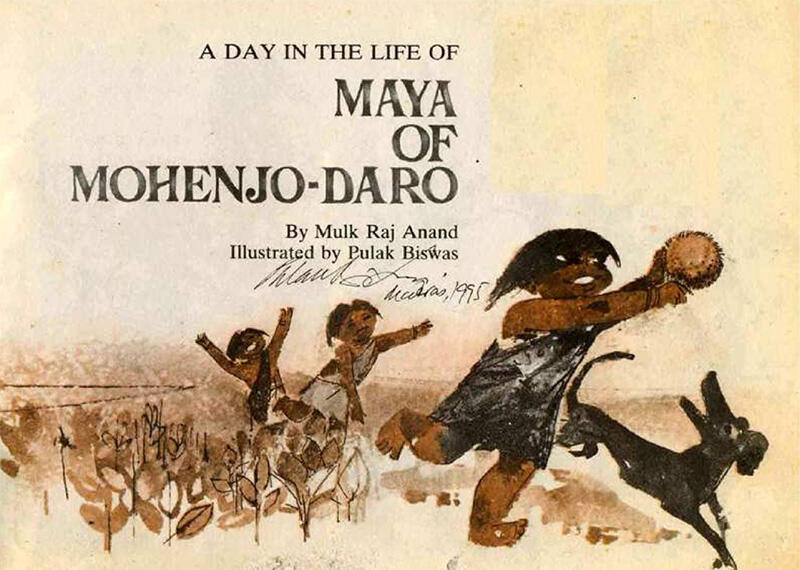Published in 1968, A Day in the Life of Maya of Mohenjo-Daro by Mulk Raj Anand was the first ever children’s story, and the second work of Indus Valley fiction after Murdon ka Teela written by Rangeya Raghava twenty years earlier. Anand was one of the first Indian fiction writers in English to appeal to international readership. That makes one wonder why he did not set a full-scale English novel in the ancient culture, which did not happen for almost forty years thereafter.
A Day in the Life of Maya of Mohenjo-Daro is just that - an account of how a little girl spent her day 4,000 years ago - a story without a plot. Yet Anand and the illustrator Pulak Biswas together create a brilliant narrative that holds younger children in awe, and at times, makes them giggle. It is a fine blending of child psychology with tidbits about the Indus Valley Civilization, ensuring easy recall of its people’s forte ranging from pottery making to global trade.
Take for instance, little Maya’s distaste for cream on the top of milk, the mother telling a story to make her drink it, the father promising to make for her ‘a cup with a handle’ so that she could enjoy drinking milk from it, and her demand to ‘make it now.’
In another case, the mother put Maya to bed in the afternoon against her will. As she listened to her mother chatting with the neighbours while they embroidered, she learnt that her father had once been to Ur ‘across the black waters’ to sell his wares, and had returned after a year.
The Author also emerges as an adroit marketing man in addressing the tastes of his entire target audience which, besides the children themselves, also includes parents and grandparents who read the story to the younger kids.
At the market, Maya wanted to buy a colourful woolen ball. The father pleaded to postpone it till the following day when he expected to sell all his pots and toys as it was ‘the festival of the Mother goddess’; but the child threw a tantrum. The doting father finally conceded, bartering for it against a clay bullock-cart toy made by him, obviously costing higher.
Throughout the story, there is a casual mention of nodding animal and bird toys, fishhooks, choppers and other tools made of copper or bronze - common things which a child would immediately recognize with a glint in her eye when she visits an Indus Valley collection at a museum on a school trip.
The impact of children’s historical fiction in general, and of Maya of Mohenjo-Daro in particular, was aptly summed-up by historian and archaeologist Nayanjot Lahiri: "As a girl of ten, I read Mulk Raj Anand's tale of the Indus world. I still remember how much I identified with little Maya. My curiosity about things Harappan began with that book."
Vasant Dave, Dec. 2020.

